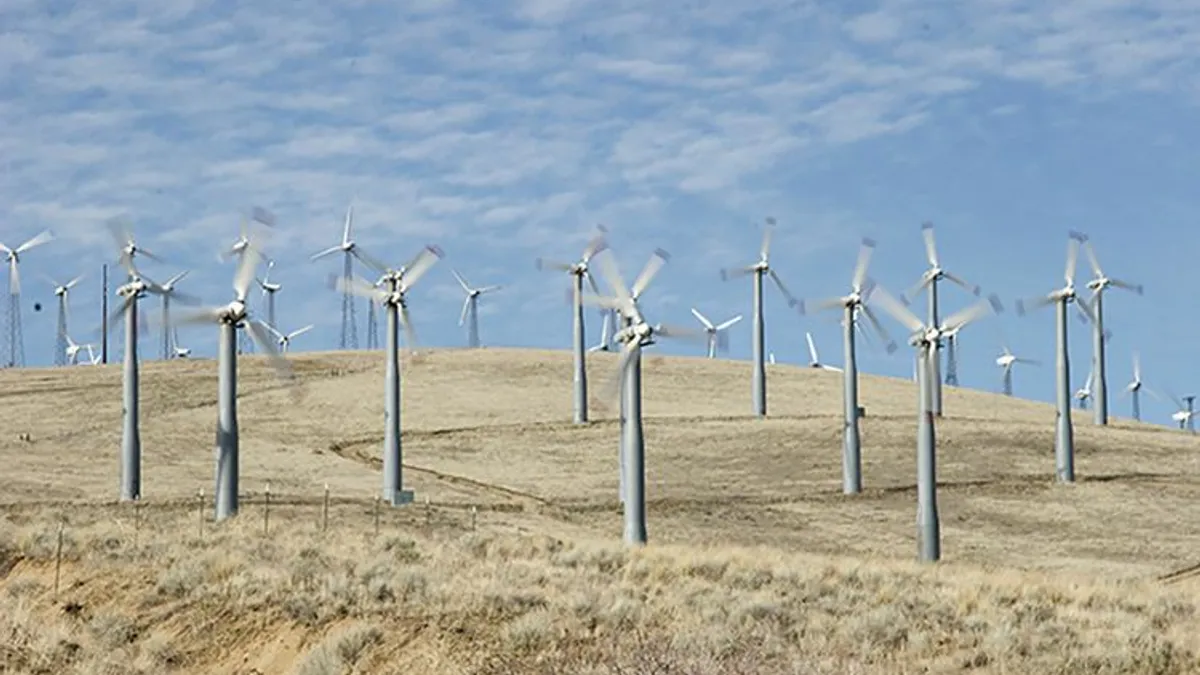Dive Brief:
- Wind generation in the Electric Reliability Council of Texas territory topped 15,000 MW for the first time on Nov. 27, and met about 45% of power demand at the time, according to the grid operator.
- More than half the power, almost 9,000 MW, was produced in West and North Texas, say ERCOT officials.
- The wind blew strong all day, continuing to supply 10,000 MW during the night. According to ERCOT, load served by wind on Sunday averaged nearly 41%.
Dive Insight:
Texas wind generation continues to grow, meaning peak generation can rise and fall wildly. On Nov, 28, ERCOT used 15,033 MW of electricity from wind at around noon, a new peak, but the strong generation continued for hours.
"We saw high wind output throughout the day, ranging from just over 10,000 MW during the late night hours to this peak output during the noon hour," said ERCOT Senior Director of System Operations Dan Woodfin.
Of the total, the grid operator said more than 8,800 MW was produced from wind generation facilities in West and North Texas; almost 3,800 MW came from the South region, mostly the Gulf Coast area; and about 2,300 MW came from the Panhandle region.
The portion of load served by wind ranged from about 35% to more than 46%, averaging nearly 41% throughout the day. "Over the years, ERCOT has taken a number of steps, such as improving renewable generation forecasts, to allow us to operate the grid reliably on days like this," Woodfin said.
The record comes less than two weeks after the previous high. According to ERCOT, the previous wind generation output record of 14,122 MW was set on Nov. 17. The current record for percentage of load served, more than 48%, was set in March.
Last year, wind produced almost 12% of energy used in ERCOT. As of last month, wind generation was serving 14.7% of demand.
Even with the advances in wind energy, carbon emissions in ERCOT are not expected to fall significantly to 2030. Unless renewables outpace growth expectations or more fossil plants go offline, the Brattle Group forecasts nearly identical CO2 levels for ERCOT in 2035 based on a scenario with low gas and solar prices.















